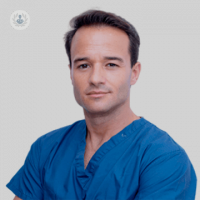Artroscopia, la técnica menos invasiva para las lesiones articulares
Written in association with:La artroscopia es un procedimiento mínimamente invasivo mediante el cual se consigue visualizar en una pantalla el interior de la articulación. Para conseguirlo se realiza con una pequeña cámara u óptica (artroscopio) que se introduce a través de una mini-incisión (menor de un centímetro), llamada portal.
Es una técnica que puede aplicarse a muchas articulaciones, que se dividen en pequeñas y grandes articulaciones e incluyen: el hombro, la cadera, el tobillo, la muñeca y la rodilla, entre otras.
Según la patología a tratar y la articulación puede ser necesaria hacer una mini-incisión o portal de entrada adicional para introducir un instrumental específico que permita palpar y/o reparar las diferentes estructuras que tienen una lesión.

¿Para qué se utilizan los distintos tipos de artroscopia?
La artroscopia permite visualizar las estructuras del interior de la articulación para así evaluar e intervenir el cartílago, el ligamento cruzado anterior y los meniscos de la rodilla, y los tendones del manguito rotador en el hombro, entre otros.
Algunos de los procedimientos más frecuentemente realizados por vía artroscópica incluyen:
- Extracción de cuerpos libres,
- Reparación del labrum glenoideo (en casos de luxaciones recidivantes de hombro)
- Reparación de roturas en el tendón supraespinoso, infraespinoso y subescapular del hombro
- Pinzamiento femoroacetabular de la cadera (CAM y Pincer)
- Reparación del ligamento cruzado anterior y posterior en la rodilla
- Resección o reparación del menisco de la rodilla
- Tratamiento de lesiones de cartílago articular con distintas técnicas
- Tratamiento del pinzamiento del tobillo
A veces también se emplea la artroscopia para valorar la superficie de la articulación en fracturas de muñeca y rodilla, garantizando una correcta reducción de la superficie articular.
¿Cuáles son las principales ventajas de la artroscopia?
El hecho de realizar el procedimiento mediante pequeñas incisiones hace que las tasas de infección sean muy bajas, y que el tiempo ingreso y recuperación sea más corto. Además, proporciona un resultado estético mejor comparado con la cirugía abierta.
¿Es la artroscopia dolorosa?
La artroscopia es un procedimiento no doloroso que se lleva a cabo en quirófano por el especialista en Traumatología. En la mayoría de casos se realiza con anestesia regional y sedación, evitando la anestesia general. Casi todos los procedimientos hechos por artroscopia no requieren de ingreso hospitalario sino que se hacen de forma ambulatoria, es decir, el paciente se va a casa en el mismo día de la intervención.


